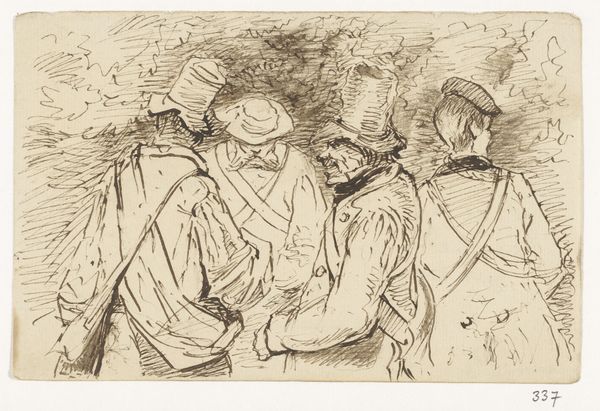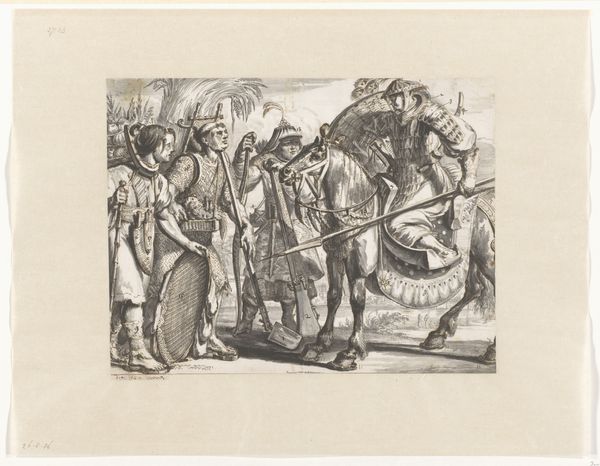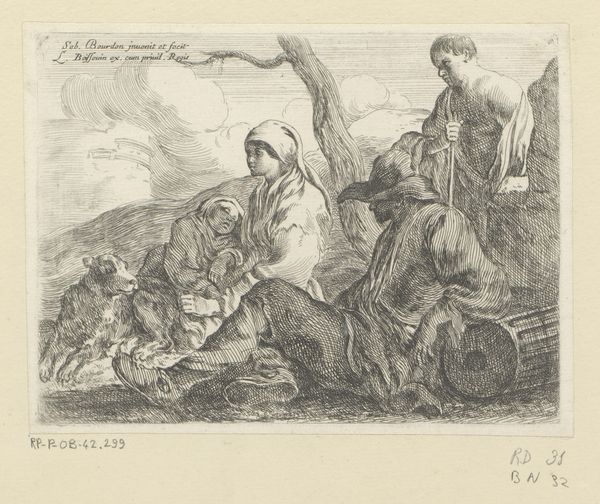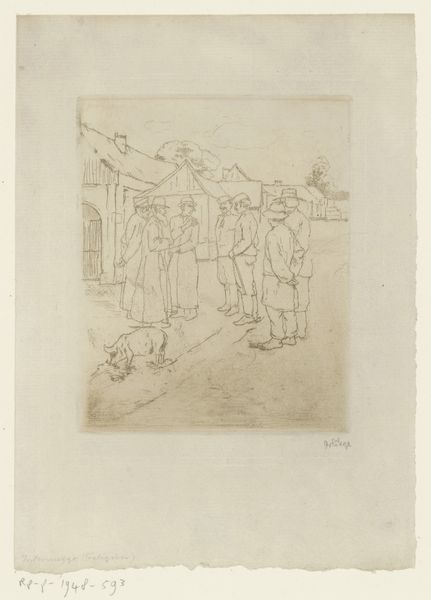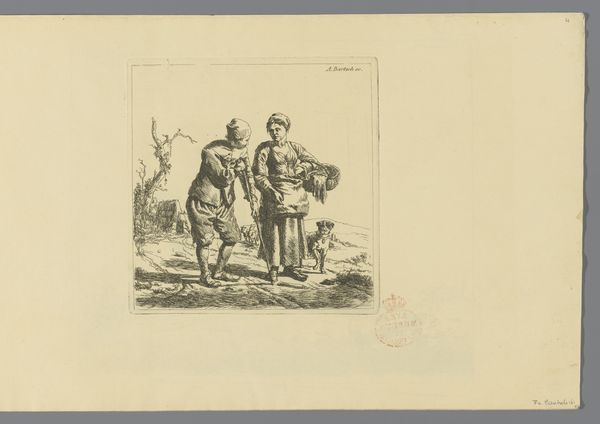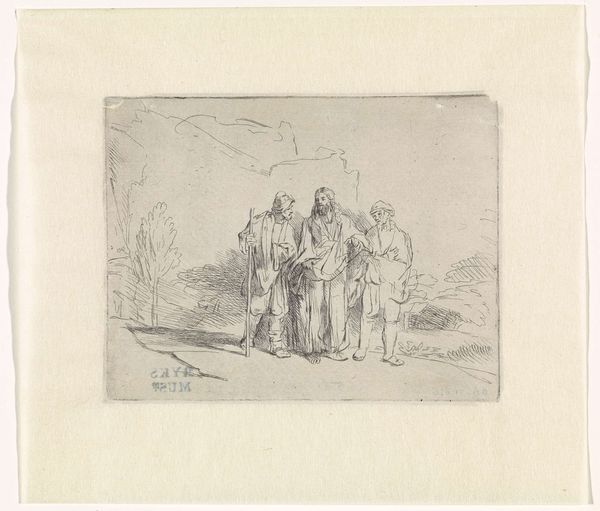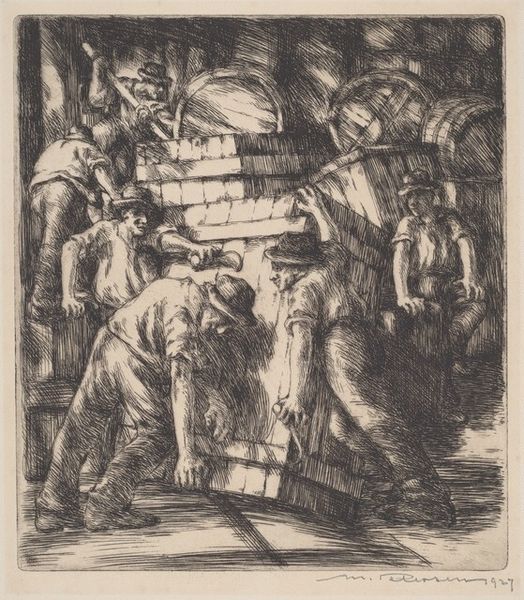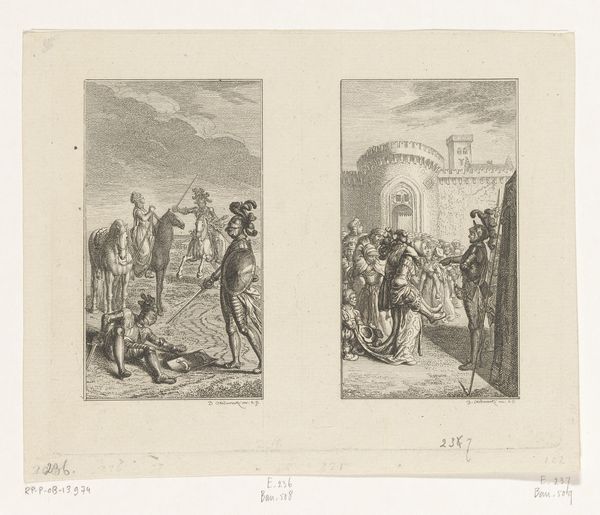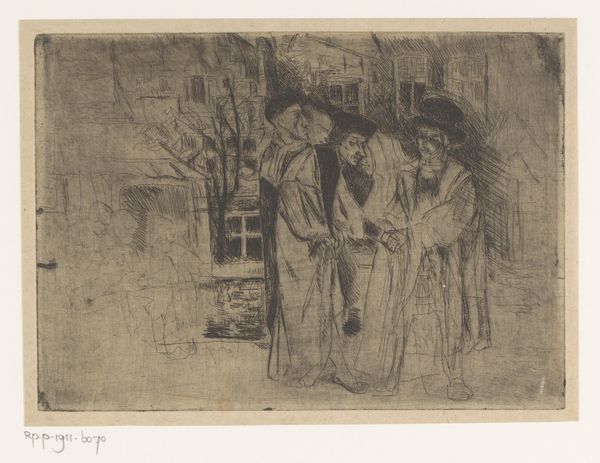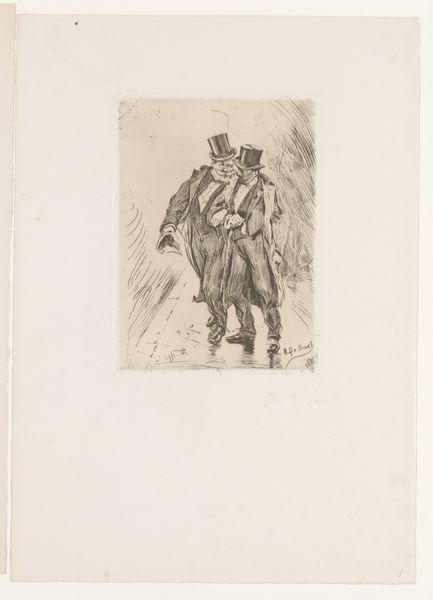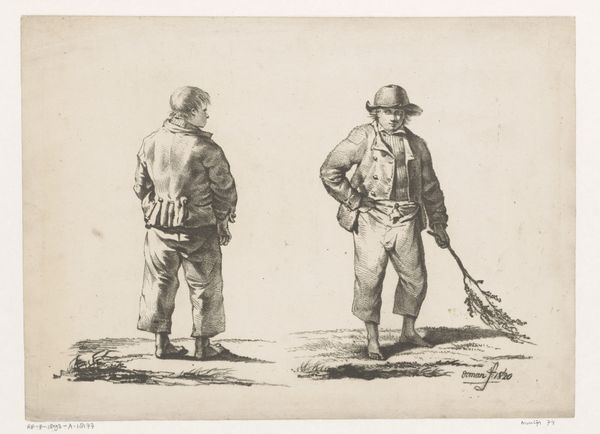
print, etching
portrait
baroque
etching
landscape
genre-painting
Dimensions height 80 mm, width 109 mm
Curator: Johann Wilhelm Baur's etching, "Three Dutchmen, an Ice Scene in the Background", made around 1636, captures a particular moment in Dutch history and artistry. Editor: It’s strangely compelling! Despite the rather sparse lines, there’s a real sense of mood. An almost austere landscape looming in the background—it gives the piece a kind of foreboding gravitas. Curator: Absolutely, and consider the symbols woven into the composition. The figures are confidently postured, conveying prosperity and burgeoning mercantile power through their elaborate garbs. What is masked however in their posturing is the fraught reality of that success as the Low Countries were embattled in constant political skirmishes that challenged social orders in art and culture. Editor: Yes, and that sense of unease becomes even more pointed when you view it within the framework of the emerging Dutch Republic and its social stratification. Who were these men? Did they participate in the colonies? Curator: Likely members of the merchant class, the composition deliberately mirrors types frequently portrayed as Biblical or ancient leaders—but it presents contemporary burghers. Editor: So, Baur's really collapsing social commentary with this kind of classic heroic presentation? Curator: I see it as a Baroque commentary on Dutch society. Note how the barren landscape behind the well-dressed figures isn’t merely a background but a symbolic space reflecting human impact and resilience through hardiness and resolve. It’s a loaded symbol of their relationship with the land. Editor: It makes me think about resource extraction. About how environments can seem remote until linked with consumption and political agency. Even the etching technique contributes to a mood—like looking back through a cloudy memory. Curator: An insightful observation! Baur's masterful etching technique enhances both its representational precision and interpretive flexibility. He uses relatively light and quick etching to evoke emotion rather than convey detail with accuracy. Editor: Looking at the scene, I see men whose appearances signal an important stake in something beyond just what's directly in front of them. Curator: A subtle and brilliant visual rhetoric! Editor: Yes, it reveals complex interconnections linking seemingly ordinary figures with sweeping cultural, political, and even ecological transformations that shape our understandings of early modernity. It’s so deceptively complex!
Comments
No comments
Be the first to comment and join the conversation on the ultimate creative platform.
